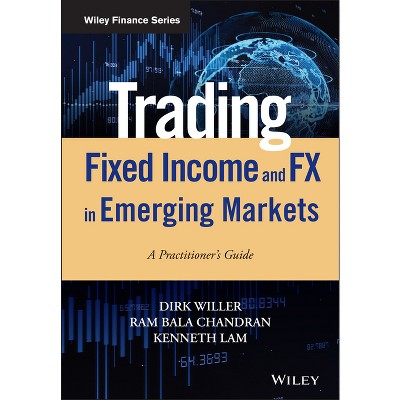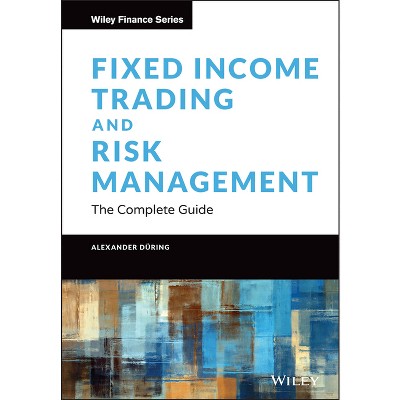Problems and Solutions in Mathematical Finance, Volume 2 - (Wiley Finance) by Eric Chin & Dian Nel & Sverrir � & lafsson (Hardcover)

About this item
Highlights
- Detailed guidance on the mathematics behind equity derivatives Problems and Solutions in Mathematical Finance Volume II is an innovative reference for quantitative practitioners and students, providing guidance through a range of mathematical problems encountered in the finance industry.
- About the Author: Dr. Eric Chin (London, UK) is a quantitative analyst at Standard Chartered Bank where he is involved in providing guidance on price testing methodologies and their implementation, formulating model calibration and model appropriateness across all asset classes.
- 864 Pages
- Business + Money Management, Investments & Securities
- Series Name: Wiley Finance
Description
Book Synopsis
Detailed guidance on the mathematics behind equity derivativesProblems and Solutions in Mathematical Finance Volume II is an innovative reference for quantitative practitioners and students, providing guidance through a range of mathematical problems encountered in the finance industry. This volume focuses solely on equity derivatives problems, beginning with basic problems in derivatives securities before moving on to more advanced applications, including the construction of volatility surfaces to price exotic options. By providing a methodology for solving theoretical and practical problems, whilst explaining the limitations of financial models, this book helps readers to develop the skills they need to advance their careers. The text covers a wide range of derivatives pricing, such as European, American, Asian, Barrier and other exotic options. Extensive appendices provide a summary of important formulae from calculus, theory of probability, and differential equations, for the convenience of readers.
As Volume II of the four-volume Problems and Solutions in Mathematical Finance series, this book provides clear explanation of the mathematics behind equity derivatives, in order to help readers gain a deeper understanding of their mechanics and a firmer grasp of the calculations.
- Review the fundamentals of equity derivatives
- Work through problems from basic securities to advanced exotics pricing
- Examine numerical methods and detailed derivations of closed-form solutions
- Utilise formulae for probability, differential equations, and more
Mathematical finance relies on mathematical models, numerical methods, computational algorithms and simulations to make trading, hedging, and investment decisions. For the practitioners and graduate students of quantitative finance, Problems and Solutions in Mathematical Finance Volume II provides essential guidance principally towards the subject of equity derivatives.
From the Back Cover
Problems and Solutions in Mathematical Finance
VOLUME 2
Equity Derivatives
Eric Chin, Dian Nel and Sverrir Ólafsson
The quantitative methods required for the pricing and hedging of a range of financial securities are drawn from mathematical finance, an important and rapidly growing discipline. In an increasingly complex financial world, the role of mathematical finance is indispensable. It follows that successful financial engineers or quants need to have an excellent grasp of all the major technicalities of mathematical finance to master its diverse applications in the financial industry.
Problems and Solutions in Mathematical Finance Volume 2: Equity Derivatives is the second of a four-volume set of books focusing on problems and solutions in mathematical finance.
The first volume in the series introduced the reader to all the important concepts in probability and stochastic calculus. The second volume covers a broad area of equity derivative contracts, ranging from vanilla options to various more complex options such as time dependent American, compound, barrier and volatility options. The theoretical presentation and its effective integration with a wide range of problems is clear and to the point. This approach brings the student quickly to the forefront of the modern practice of mathematical finance.
This series is unique as it provides the student with rigorous but yet intuitive explanations of some highly technical material further deepened by extensive real-world examples.
Written mainly for students, industry practitioners and those involved in teaching in this field of study, Equity Derivatives provides a valuable reference book to complement one's further understanding of mathematical finance.
About the Author
Dr. Eric Chin (London, UK) is a quantitative analyst at Standard Chartered Bank where he is involved in providing guidance on price testing methodologies and their implementation, formulating model calibration and model appropriateness across all asset classes.Dian Nel (London, UK) is a quantitative analyst currently working for Norwegian Energy and has many years experience in energy markets where his main interests include exotic options, portfolio optimisation and hedging in incomplete markets.
Dr. Sverrir ?lafsson?(Reykjavik, Iceland) is a professor in the School of Business at the University of Reykjavik, Iceland and a visiting professor in the Department of Electrical Engineering and Computer Science at Queen Mary University of London. He is also the director of Riskcon Ltd a UK based consultancy on risk management.
Shipping details
Return details
Trending Non-Fiction











